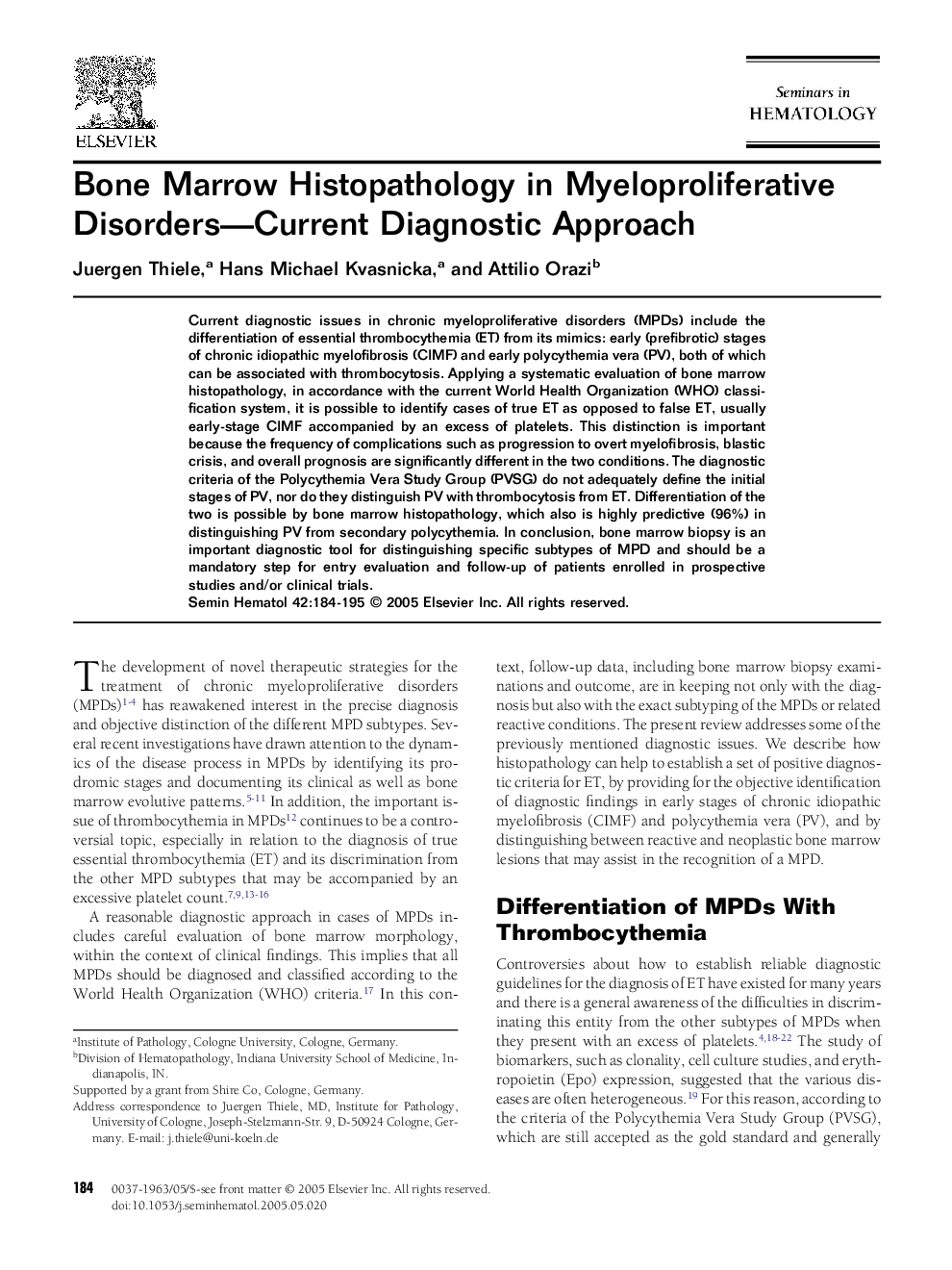| Article ID | Journal | Published Year | Pages | File Type |
|---|---|---|---|---|
| 9258406 | Seminars in Hematology | 2005 | 12 Pages |
Abstract
Current diagnostic issues in chronic myeloproliferative disorders (MPDs) include the differentiation of essential thrombocythemia (ET) from its mimics: early (prefibrotic) stages of chronic idiopathic myelofibrosis (CIMF) and early polycythemia vera (PV), both of which can be associated with thrombocytosis. Applying a systematic evaluation of bone marrow histopathology, in accordance with the current World Health Organization (WHO) classification system, it is possible to identify cases of true ET as opposed to false ET, usually early-stage CIMF accompanied by an excess of platelets. This distinction is important because the frequency of complications such as progression to overt myelofibrosis, blastic crisis, and overall prognosis are significantly different in the two conditions. The diagnostic criteria of the Polycythemia Vera Study Group (PVSG) do not adequately define the initial stages of PV, nor do they distinguish PV with thrombocytosis from ET. Differentiation of the two is possible by bone marrow histopathology, which also is highly predictive (96%) in distinguishing PV from secondary polycythemia. In conclusion, bone marrow biopsy is an important diagnostic tool for distinguishing specific subtypes of MPD and should be a mandatory step for entry evaluation and follow-up of patients enrolled in prospective studies and/or clinical trials.
Related Topics
Health Sciences
Medicine and Dentistry
Hematology
Authors
Juergen Thiele, Hans Michael Kvasnicka, Attilio Orazi,
